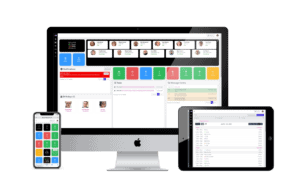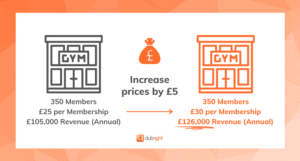The last eighteen months have been unbelievably turbulent for the fitness industry and as we emerge from the COVID-19 pandemic, club owners must be doing everything possible to get their businesses back on track.
One of the less exciting and often forgotten about parts of running a business is looking at your performance reports. Although some may say it’s boring and mundane, it can actually tell you a lot about how your business is doing as well as giving you a roadmap for the future.
To make it less boring and help you cut through the figures, graphs and percentages, we’ve put together five key KPIs that you should be monitoring at your club.
Active members.
This is a pretty obvious one, but it’s still a key KPI that you should be monitoring. The number of active members you have tells you how many people are paying you at a given time and in ClubRight, it’s the first KPI shown on your dashboard. It’s also a great statistic to use in combination with the others we’ll be talking about in this post.
You should have an idea of the minimum number of active members you need each month to break even with your costs. This helps to give you a running sales target to work towards and prevents any nasty surprises it’s time to pay your bills.

Cost per lead.
It’s crucial to be aware of your cost per lead because it allows you to see how cost-effective your marketing efforts are. It’s important that you’re using a mixture of different tactics to bring in new customers, but without identifying the cost per lead, you won’t know which method is giving you the most value.
If you’re spending a fortune printing off leaflets and doing sales outreach, you’ll likely have a higher cost per lead. At which point, you might decide to switch to more cost-effective methods such as social media marketing or email marketing. Switching to digital marketing often has a lower cost and a higher success rate, helping to keep your cost per lead at a minimum.
Revenue per customer.
On the flipside of cost per lead is revenue per customer. This one is a very valuable KPI which many club owners often forget about. Understanding how much revenue you’re making from a single customer allows you to break down your financial targets and translate them into member targets. For example, “To reach £X annual revenue, we need to acquire another X members before the end of the year.”
You can also use this metric to determine which services give you the most revenue per customer so that you can decide where to focus your efforts. For example, if your standard membership option is giving you a stronger RPC than your spin classes, it might be time to think about how you can upsell to the spin class attendees.

Net Promoter Score (NPS).
Net promoter score is designed to measure the quality of your customer service. It’s similar to asking for customer feedback, but the information you get out of it is far more detailed than a simple, “rate our service on a scale of 1-10.” Measuring your NPS quarterly allows you to monitor customer loyalty and identify any trends as well as highlighting areas that could be improved.
If you’re interested in learning your Net Promoter Score, our Leisure-Net Solutions help you to find out your NPS score so that you can get to know your customers inside-out. As Approved Partners of ClubRight, their services report automatically and can be linked to trigger points within member journeys in our gym software.
Speak to Leisure-Net Solutions by contacting them here.
Retention Rate.
Also known as customer churn, this percentage-based metric will essentially tell you whether you’re delivering on your promises to your customers. Poor retention rates suggest that your customers’ expectations were not met following the joining process, which is something that should be addressed with some urgency.
Ask yourself:
- Was the joining process clear and concise?
- Does our branding send out the right message?
- Is our service level as clear as possible?
- How can we improve our member experience?
Focusing on retention rather than acquisition is far better for your return on investment. Even a 5% increase in retention can lead to anywhere between a 25% – 29% increase in revenue for your club, so it’s worth setting aside time to work out your retention rate and whether it can be improved upon.
Comparing these KPIs to industry benchmarks will help give you a good idea of whether your business is healthy. If you’ve been up and running for some time, it’s also a good idea to compare your annual performance – particularly as we transition into a post-pandemic society after perhaps the most damaging year for the fitness industry.
Let’s all use data to get back on track!
Interested in learning how ClubRight can help you get clear on your business health? Speak to one of our product experts today by booking a demo or giving us a call on 0203 884 9777.






